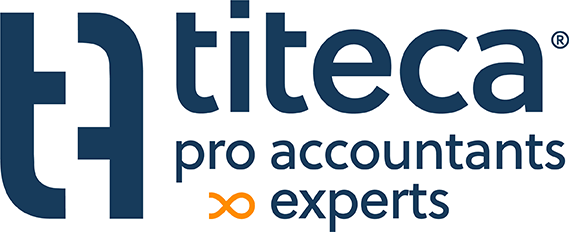"Historically high indexation of wages", "Workers eagerly await wage increase", "Government provides shock absorber for wage costs", "Labor deal introduces four-day work week". No doubt you saw these and many other items appear in the media in recent weeks. Since there have been a lot of recent changes in social law, in this article we bundle the most important novelties that await you as an employer in 2023.
Indexation
Belgium is one of the few countries in Europe in which a system of "automatic wage indexation " is applied. Through automatic wage indexation follow gross wages in most sectors the evolution of consumer prices. "The more expensive life becomes, the more wages will rise." However, much more limited indexation is provided in certain sectors.
With which indexation scheme you face as an employer, is so depending on the sector in which your company finds itself. So by how much percent, when, and exactly which wages will rise can vary thoroughly from company to company.
For example:
| PC 100 (Supplementary PC for workers) | PC 200 (Supplementary PC for white-collar workers) |
| Jan. 1 (next expected date: June 1, 2023) | Jan. 1, 2023 (annual) |
| 2% | 11.06% |
| Only on minimum wages | On the minimum and effective wages |
In any case, what is certain is that, as an employer, you cannot escape the emerging indexing scheme within your sector. Consequently, it is important to know what financial impact this indexing may have on your company.
Although it is often assumed that only gross salaries are indexed, one should not lose sight of the fact that employer social security contributions are also indexed. In addition, (the contributions for) the year-end bonus, the contributions for the annual vacation pay are also indexed, and e.g. group insurance, which is expressed as a percentage of the gross salary, will also increase.
All of this ensures that the price tag on emerging indexing may be higher than often estimated.
Discount on patron NSSO contributions
To cushion some of the wage cost shock for employers, the federal government has decided to offer all businesses for the first two quarters of 2023 a discount of 7.07% on employer social security contributions. This discount will be granted automatically.
Furthermore, it will also be possible to create a payment delay request for the third and fourth quarter 2023 employer contributions. The deferral will be possible until 2025 and you will have to apply to the NSSO yourself.
Currently, these measures have not yet been passed into final legislation. We will keep you informed as soon as this is the case.
Purchasing Power Premium
On Nov. 28, 2022, the federal government reached an agreement on the wage framework for the next two years. Among other things, this agreement provides for the purchasing power premium. Through this premium, the government wants to allow companies, which have performed well over the past year in this exceptional economic context, to reward their employees for their efforts.
The purchasing power premium is max. EUR 500 for companies that have achieved so-called "good results" by 2022, and may even EUR 750 amounts for companies that have achieved so-called "exceptionally high profits" by 2022. What we should understand by the terms "good results" and "exceptionally high profits" is not entirely clear at this point. It is up to the sectors to give a sector-specific interpretation of these terms in a sector agreement.
The above premium refers to a one-time premium that is fully deductible and completely exempt from withholding tax or NSSO.
Labor deal
Through the recently approved and published "Labor Deal," the federal government aims to improve both the work-life balance improve, as well as increase employment.
Below we provide an overview of the most important measures that can have a direct impact on your business.
| WORKING HOURS AND WORK-LIFE BALANCE | |
| Better work-life balance | Since Nov. 20, 2022, full-time employees can, under certain conditions, ask their employer to perform the normal work week of 5 days on 4 days (the so-called "four-day week").
For example: When the effective weekly working hours within your company is 38h, 9h30 will be worked for 4 days.
In addition, full-time employees can, under certain conditions, ask their employer to work alternating weekly schedules. Through this system, it will be possible to work more hours one week and fewer hours the next. However, the intention is that over a cycle of 2 consecutive weeks normal weekly working hours are respected. For example: In week 1, the employee works 45 hours and in week 2, the employee works 31 hours. The normal weekly working hours of 38 hours are respected over the 2-week period.
As an employer, however, you are not required To provide the above regimes within your company. If you do wish to do so, you will need to register this arrangement in the labor regulations. Only when this is provided for in the labor regulations can employees then apply through a written request. If you agree to this as an employer, then the mutual agreement on this should be recorded in a annex to the employment contract (valid for max. 6 months). As an employer, you can also still accept an employee's request refuse, but you should do this motivate within one month (e.g., due to organizational reasons).
|
| Announcement of part-time variable hour schedules | When part-time workers with variable hours are employed in the company, they will now have to be notified earlier of the applicable hours. The current notification period will be increased from 5 to 7 business days.
At the sectoral level, this deadline may be reduced to 3 working days if necessary. Appearance by Aug. 20, 2023 your labor regulations should be amended. |
| Right of deconnection | If there more than 20 employees are employed in your enterprise, you will appointments should lay down about the right to deconnection in your labor regulations.
Appearance by April 1, 2023 your employment regulations must provide for the following:
|
| TRAINING | |
| Individual training right & Training plan | Depending on the number of employees within your company, you as an employer also have certain obligations regarding training.
If you more than 20 employees employed, you will annually, each time before March 31, must establish a training plan. This plan includes, at a minimum, the training courses offered and the target group of employees for which they are intended. The next deadline for this requirement is March 31, 2023. Further, each full-time employee will be entitled to An average of 5 training days per year. These days will be built up gradually over the next few years: 4 days in 2023 and 5 days starting in 2024.
If you between 10 and 20 employees employed, each full-time employee will be entitled to an average of 1 training day per year. The introduction of individual training rights will be done either by collective bargaining agreement by the industry or through an individual training account.
|
Do not hesitate to contact us here contact us with questions.
Would you like a conversation about the right approach for your business? Then make an appointment here with our Legal-HR Advisors who will assist you with all your social law questions!




